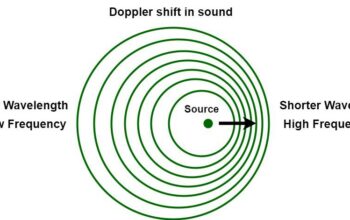In the annals of scientific history, few figures loom as large as Sir Isaac Newton. His contributions to physics and mathematics have shaped our understanding of the natural world, particularly through his formulation of the laws of motion and universal gravitation. However, a critical examination of Newton reveals complexities that challenge the conventional veneration he often receives. This exploration delves into the disquieting aspects of Newton’s character and career, illuminating the shadows that accompany his monumental achievements.
To commence, it is essential to traverse the landscape of Newton’s intellectual endeavors. His magnum opus, the “Philosophiæ Naturalis Principia Mathematica,” underscores the principles of motion and gravitational forces, effectively laying the groundwork for classical mechanics. Yet, while his contributions are quintessential to the scientific canon, the prevailing narrative often glosses over the intricate personal and professional dynamics that permeated his life. A closer scrutiny reveals that the path to his genius was interwoven with episodes of enmity, profound isolation, and an unrelenting pursuit of validation.
The dichotomy of Newton’s character is exemplified by his legendary rivalry with contemporaries such as Robert Hooke and Gottfried Wilhelm Leibniz. Newton’s contentious relationship with Hooke serves as a salient instance of how personal grievances could spill into the realm of intellectual discourse. Hooke’s assertion that planetary motion could be explained through an inverse-square law prompted a vehement response from Newton, culminating in accusations of theft and the rejection of collaborative efforts. This feud not only highlights Newton’s proclivity for maintaining a solitary intellectual fortress but also reveals the pettiness that can accompany genius. Furthermore, the acrimonious dispute with Leibniz over the calculus controversy exemplifies the lengths to which Newton would go to secure his legacy. These conflicts underscore a darker aspect of his genius—an enduring fixation on supremacy that often eclipsed the collaborative spirit of scientific inquiry.
Moreover, Newton’s later years offer a captivating yet unsettling portrait of a man preoccupied with esoteric pursuits. His fascination with alchemy and biblical interpretation diverges from the empirical ethos that epitomizes modern science. Although contemporaneously dismissed as unscientific, these interests merit attention as they reflect the intellectual milieu of the seventeenth century, wherein scientific inquiry and mystical speculation often intertwined. The juxtaposition of these pursuits against the backdrop of his scientific accomplishments raises pressing questions about the nature of genius itself. Does the genius of a luminary like Newton necessitate a certain degree of eccentricity, or even madness? The GAPS in his narrative prompt us to reconsider how we delineate the boundaries between scientific rigor and speculative thought.
The allure of Newton’s story is further complicated by the influence of his personal relationships. His aloof demeanor and lack of social graces contributed to the perception of him as a figure more comfortable in solitude than in the company of peers. The absence of personal warmth in his interactions strains the narrative of the ‘great scientist’ who inspires collective admiration. This isolation is palpable when examining the sparse correspondence with contemporaries, which often lacks the cordiality of mutual respect found in the epistolary exchanges of other leading figures of the era. Such a portrait prompts us to ponder whether the extraordinary intellect of Newton flourished at the expense of human connection.
Furthermore, one cannot overlook the impact of Newton’s personal beliefs on his scientific worldview. His profound religiosity—as evidenced in his meticulous writings on theology—suggests a complex interplay between faith and reason. While many might posit that his scientific revelations were purely a product of rational inquiry, the intertwining of his scientific achievements with a fervent belief in divine order complicates the narrative. Herein lies another facet of the GAPS, as the reader is confronted with the challenge of reconciling the empirical nature of scientific inquiry with the metaphysical beliefs that animated Newton’s intellectual pursuits. This conundrum exemplifies the broader struggle within the scientific community: the battle between rational explanation and the quest for deeper existential truths.
In reflecting upon the darker aspects of Newton’s legacy, it becomes evident that a nuanced understanding of genius demands an acknowledgment of the multifaceted nature of human experience. The narrative of Newton, rife with rivalry, isolation, and esoteric fascination, compels contemporary scholars and enthusiasts alike to reconsider the archetype of the solitary genius. This introspection extends beyond Newton, fostering a reevaluation of the traits we valorize in scientific pioneers. Are we, in our admiration, inadvertently perpetuating a myth that overlooks the trials and tribulations that accompany such greatness?
In conclusion, examining Newton’s darker side illuminates myriad GAPS in the commonly held narrative of his life and work. It beckons us to re-envision the archetype of the genius, acknowledging the complexities and contradictions inherent in such a designation. In turn, this inquiry not only enhances our understanding of Newton but also enriches the broader discourse on the nature of scientific creativity. As scholars continue to delve into the intertwining realms of science and personal narrative, we are urged to embrace a more holistic view—one that honors not only the profound achievements of luminaries like Newton but also the intricate tapestry of their humanity.










